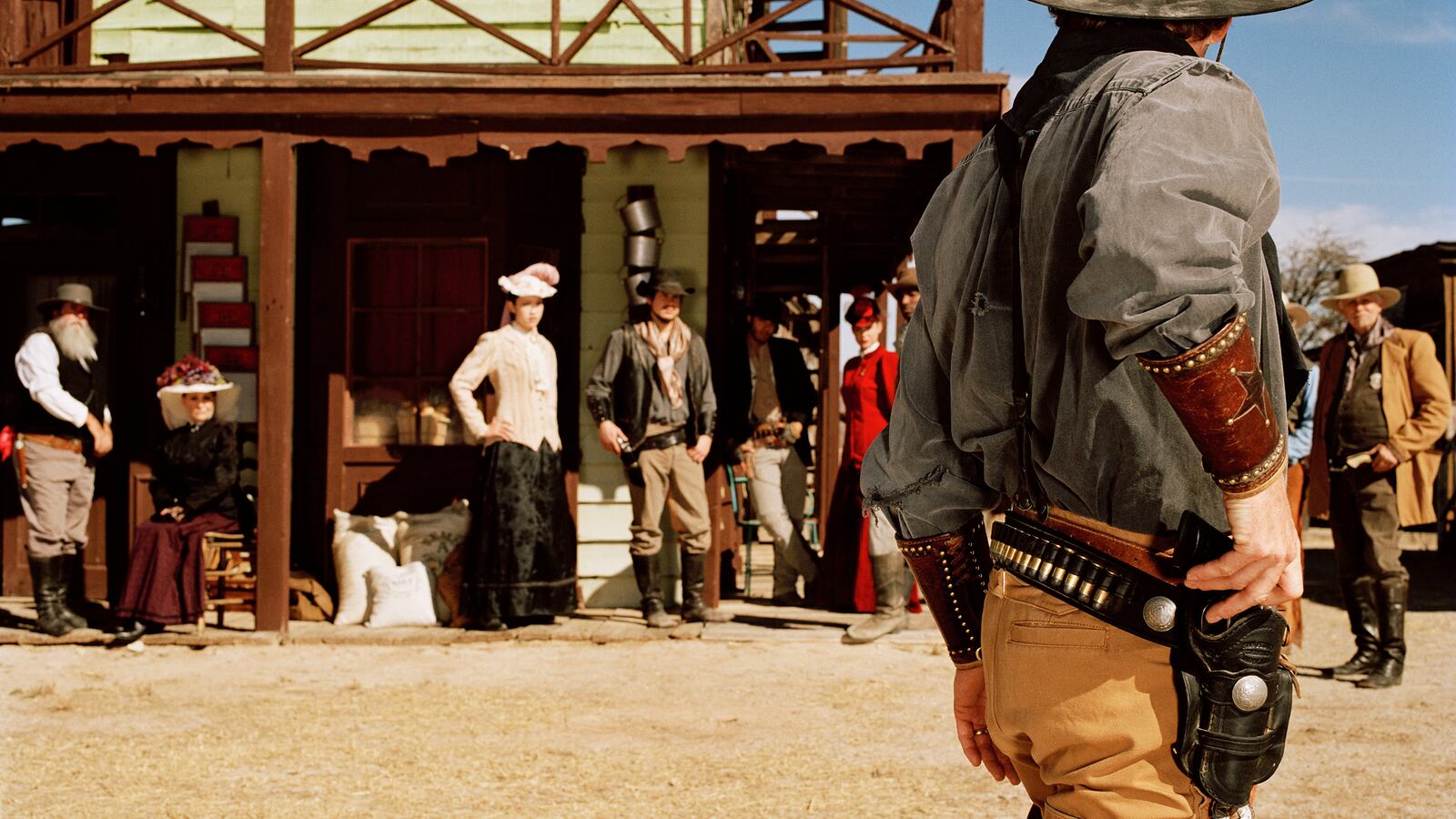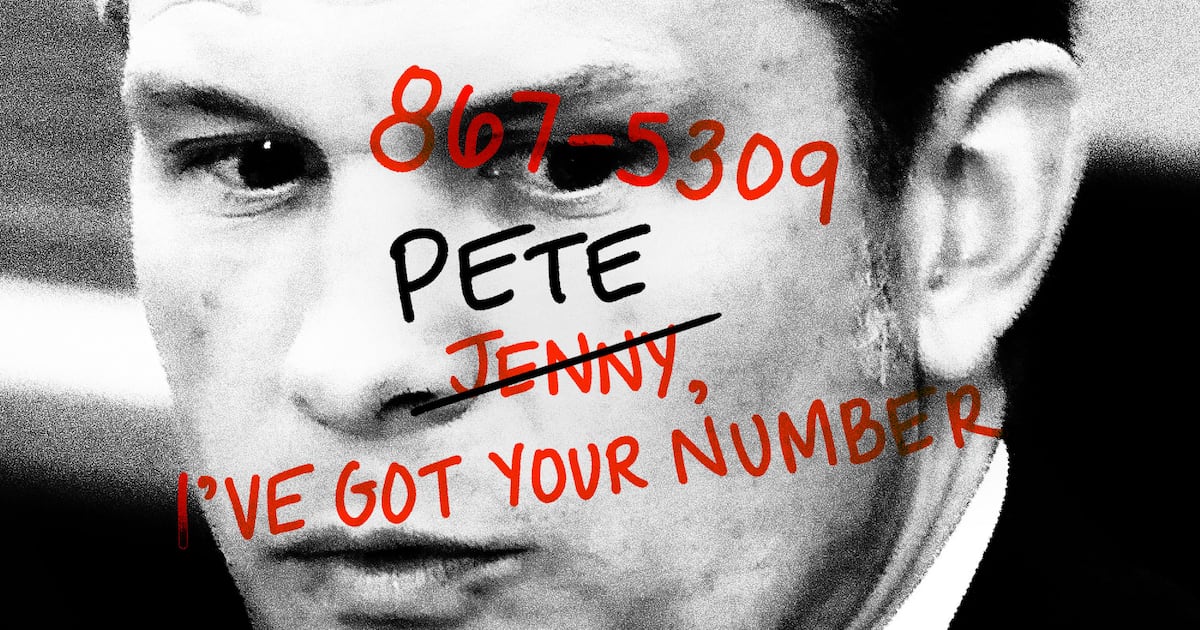Although we all know that cowboys strutted around shooting off their Colt .45s “Peacemakers” all day, the Wild West wasn't so wild that it – and the Stormy South -- couldn't include gun control.
History is annoying. It muddies our legends with facts. Indeed, many local laws in the nineteenth-century prohibited carrying concealed weapons. A Dodge City billboard warned: “The Carrying of Firearms Strictly Prohibited.” Also, that “gun that won the west,” the Peacemaker – was about a tenth as popular as the Harrington & Richardson. And the legendary Gun Fight at the OK Corral was triggered partially by the Tombstone, Arizona, law compelling individuals to check-in their guns when they arrived in town.
History is also delightfully messy. Past nuance undermines partisan certainties. As UCLA Law Professor Adam Winkler writes in Gunfight, “You are certain to see more gunfights in a two-hour movie about the Wild West than you would have seen in a year of the dusty streets of Deadwood, South Dakota” – or most Wild West hot spots. And the South, Winkler adds, “was the region where some of the earliest, most burdensome, gun control laws in American history were first enacted.” At the same time, Southerners and Westerners were often gunslingers. And, as the Harvard Professor Steven Pinker writes in The Better Angels of Our Nature, the South and West were and remain America’s most honor-obsessed, and thereby most violent, regions.
In 1813, Kentucky and Louisiana became the first states to pass laws banning concealed weapons. Those laws demonstrate that only 22 years after the Second Amendment became part of the Constitution, many legislators and jurists read its guarantee that “the right of the People to keep and bear arms shall not be infringed,” through its opening, qualifying, phrase: “A well-regulated militia being necessary to the security of a free State.”
Western law long legitimized such restrictions. Great Britain’s legal pioneer William Blackstone wrote that "riding or going armed, with dangerous or unusual weapons, is a crime against the public peace." In that spirit, a nineteenth-century Alabama court concluded that the right guaranteed by the state constitution "is not to bear arms upon all occasions and in all places," meaning the legislature can "suppress the evil practice of carrying weapons secretly." The Louisiana courts would note that concealed weapons create the "tendency to secret advantages and unmanly assignations."
This concern with “unmanly” behavior emphasizes a central cause of American violence – and a central justification for American gun control. While noting that we live in relatively peaceful times compared to the past, Pinker shows that America’ upper-third – geographically not socioeconomically – is far more peaceful than its Southern-two-thirds. The Southern cult of honor – which also shaped the Wild West – fuels fights.
Yet that same cult of honor makes hiding weapons “unmanly,” justifying at least some gun guidelines. Governor James Stephen Hogg of Texas would say the "mission of the concealed deadly weapon is murder. To check it is the duty of every self-respecting, law-abiding man."
Similarly, America’s nineteenth-century national project to spread Western civilization by “taming” the West, both flooded the country with guns – and justified gun laws. The American historian Richard Slotkin may have overcompensated in branding this mission a “savage war.” But he accurately identified this enterprise’s three defining targets. The rough individualists who helped America fulfill its Manifest destiny needed guns to protect themselves against wild animals – while hunting for food on the frontier. They used guns to subdue Native Americans – whom they dehumanized as “Red Savages” – prompting Slotkin’s linguistic boomerang. And they trusted guns to distinguish themselves from effeminate – too settled – city-folk, especially Eastern urbanites.
Yet just as successful pioneers matured from cowboys and gunslingers into farmers and city-slickers, civilizing the West required controlling guns. These restrictions proved especially effective in Western hotspots, your Dodge Cities and Tombstones, Abilenes and Deadwoods. The West’s 4 Ws -- women, wine, whiskey, and weapons – proved too volatile. Demanding that the men roaming the West check their guns when they hit the town allowed these trailblazers to continue to blaze trails, without setting every bar and brothel they visited ablaze.
Frontier gun control worked. Arrests for concealed weapons were second to arrests for drunk and disorderly conduct. The result limited murders in most frontier towns to one or two a year. Log of a Cowboy, a 1903 memoir of sorts which many historians respect as a source, suggests the sheriffs – and their gun restrictions – usually won. “Most cowboys think it’s an infringement on their rights to give up shooting in town,” the author Andy Adams recalled. Even “if it is, it stands, for your six-shooters are no match for Winchesters and buckshot; and Dodge’s officers are as game a set of men as ever faced danger.”
The October 26, 1881, “Gunfight at the OK Corral” became so famous partially because it was so rare. Marshall Virgil Earp deputized his brothers Wyatt and Morgan and his friend Doc Holliday to arrest the McLaury brothers, the Clanton brothers and Billy-the-Kid Claiborne, for brandishing their weapons flamboyantly. (Claiborne was unarmed and escaped early in the gunfight, only to die a year later). Yet today in Tombstone, Winkler notes, “you don’t even need a permit to carry around a firearm.”
In short, the old bumper sticker “The West wasn’t won with a registered gun” is only half-right. Guns were monitored, not registered. The pollster Mark Mellman notes that “in 1959, 60 percent of Americans favored a ban on pistols and revolvers” while today some polls estimate that as many as “74 percent opposed a ban on handguns.” In the intervening years, the simplistic myth of the West conquered its more subtle history. The great American Crime Wave and Cultural Upheaval spread fear and guns throughout America. And guns became a symbol to American populists, embodying individualism, independence, and law and order, just as gun control became a symbol to American progressives, embodying civilization, self-control, and rule of law.
Obviously, the gun control issue must be decided democratically in the voting booths, the legislative chambers and the courts, not academically in the history books. But good history refutes partisan hysteria from both extremes. Steven Pinker helps us realize that America is not as violent as it used to be, although it’s still more violent than it should be -- especially compared to Europe, Canada, and Israel. Adam Winkler helps us realize that all this “don’t tread on me” talk has an historic pedigree but is only as potent as politics today makes it.
And the broader debate proves that gun control is only one piece of a more complicated puzzle. To make America safer (and greater) -- even if today’s murder rate is lower than 1980’s or 1880s’s – let’s start changing many moral choices we make in shaping our culture, our society, our politics, rather than just banning various killers’ weapons of choice.
FURTHER READING
Adam Winkler, Gunfight: The Battle over the Right to Bear Arms in America (2011)
Steven Pinker The Better Angels of Our Nature: Why Violence has Decliend, (2011)
Richard Slotkin, Gunfighter Nation: The Myth of the Frontier in Twentieth-Century America (1992).




